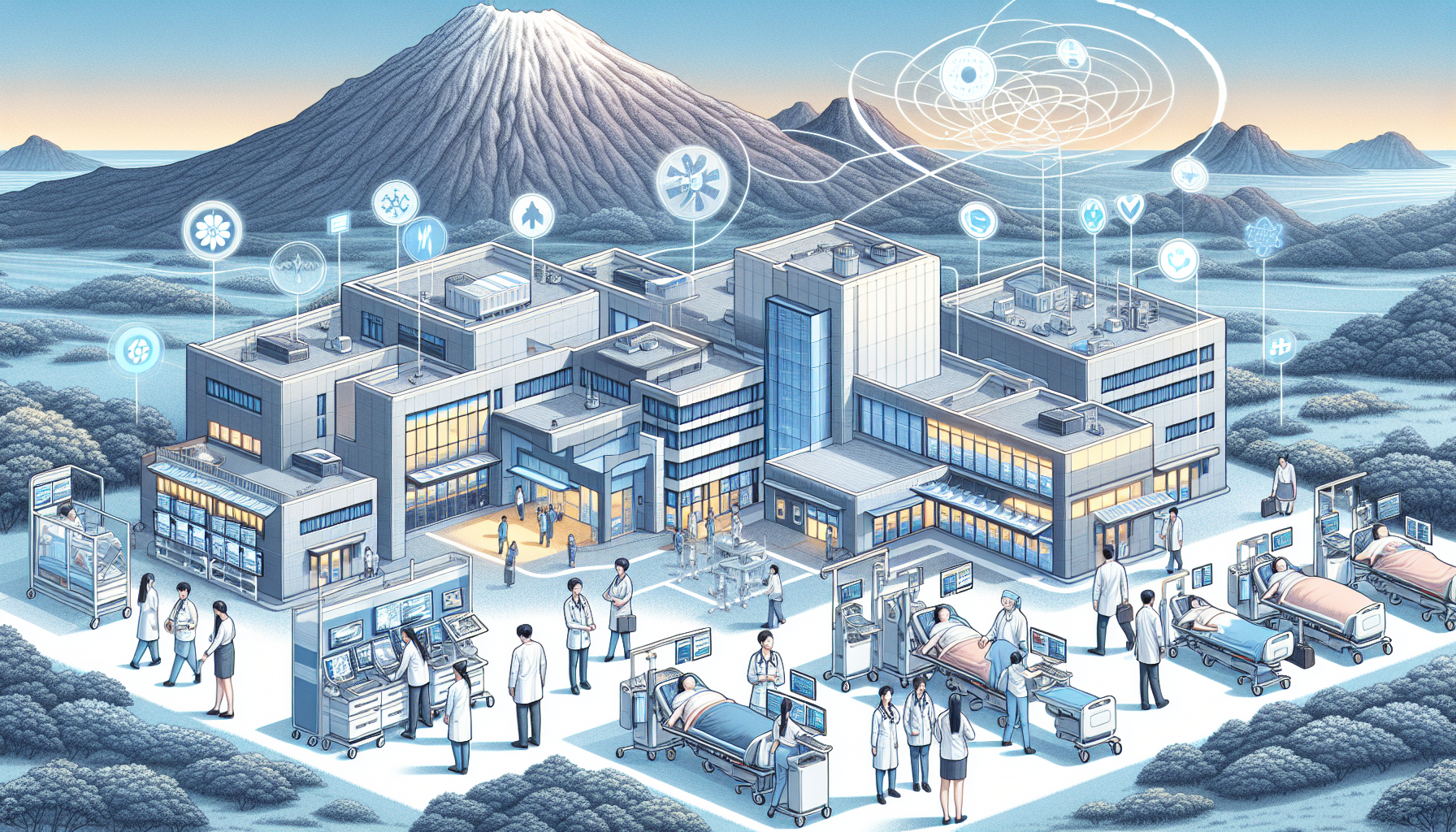Bridging the Healthcare Gap: How Jeju Hallasan Hospital is Transforming Regional Medical Care
Introduction
Imagine a world where distance doesn’t limit your access to top-tier medical care. That's the transformative journey unfolding at Jeju Hallasan Hospital, which is revolutionizing healthcare in regional areas by providing high-quality medical services, often reserved for large metropolitan centers. Let's delve into how this remarkable institution is setting a new standard for regional healthcare.
Jeju Hallasan Hospital: A Beacon of Hope for Critical Care
Jeju Hallasan Hospital is not just another medical facility; it's a lifeline for many residing in the Jeju region. Equipped with 622 beds, it functions as a comprehensive hospital, handling a wide range of medical needs. Since performing its first open-heart surgery in 2007, the hospital has completed 874 cardiovascular surgeries, tackling complex conditions like acute aortic syndrome and abdominal aortic aneurysms. What stands out is its commitment to treating critically ill patients within the region, rather than seeing them transferred to Seoul's larger hospitals.
By focusing on keeping patients local, Jeju Hallasan Hospital has become an essential healthcare player in the region. The government recognizes its efforts as a model of what regional care should be, striving to ensure that no matter where you live, medical excellence is within reach.
The Comprehensive Approach of "Inclusive Secondary Hospitals"
The concept of "inclusive secondary hospitals" is emerging as a formidable solution to centralize critical care while making it accessible to all. Jeju Hallasan is a prime example, functioning as both a trauma and emergency medical center, thus covering everything from acute to chronic care. This integrated role means that patients can receive comprehensive treatment for various medical emergencies and conditions without the delay that multiple transfers might entail.
The government's push to expand this model aims to reduce the patient influx into urban centers. This not only potentially alleviates stress on big-city hospitals but also enhances patient outcomes by ensuring timely and effective care locally.
Exceptional Emergency and Trauma Services
At the heart of Jeju Hallasan Hospital's operations is its emergency and trauma care services. The facility houses a regional trauma center equipped to handle severe cases, including major surgeries and treatments for infectious diseases. Notably, their infection control measures and hybrid facilities, like the angiography suite, allow them to handle vascular surgeries with a multidisciplinary approach.
The hospital's trauma services have shown remarkable efficiency and effectiveness, maintaining a low preventable trauma mortality rate — a critical metric indicating how well trauma patients with intense injuries are managed. This achievement reflects their commitment to ensuring lives are saved with quick and competent medical intervention.
A Well-rounded Team of Specialists
Behind every successful medical facility is a team of dedicated specialists. Jeju Hallasan boasts a strong lineup of 16 dedicated trauma specialists, including seven trauma surgeons and three cardiothoracic trauma surgeons, making it one of the most resourced centers in the wider region. The hospital's recruitment drive isn't slowing down; last year alone, they added 22 essential specialist doctors, further strengthening their capabilities.
This concentration of expertise means that even the most complex cases can be managed within the hospital, eliminating the need for patients to move between different facilities, thereby streamlining care and reducing systemic strain.
Government-backed Improvements and Support
Recognizing the success of institutions like Jeju Hallasan, the government is taking decisive steps to support regional hospitals. By enhancing 24-hour care services and focusing on performance-based compensation, the aim is to bolster regional medical facilities to efficiently manage high-stakes health scenarios.
Moreover, initiatives to bolster such facilities emphasize capacity building in areas lacking in secondary hospitals. This strategic move is integral to creating a healthcare network where all regions receive equal medical attention and capability, thus balancing the disparities between urban and rural healthcare services.
The Future of Regional Healthcare in Korea
Jeju Hallasan Hospital is paving the way for how regional healthcare should operate, offering a blueprint for future initiatives. The prospective introduction of more "inclusive secondary hospitals" could redefine regional healthcare across Korea by providing a comprehensive care model. This model ensures that from emergency services to complex surgeries, patients receive the care they need when they need it, without unnecessary travel or delays.
This proactive approach highlights a commitment to tackling healthcare inequality by acknowledging and addressing the unique needs of different regions. With continued government support and strategic upgrades in regional facilities, Korea moves closer to providing universally accessible, excellent medical care.
Conclusion
Jeju Hallasan Hospital’s success story is a testament to the power of effective healthcare delivery in regional settings. It raises important questions about how we can further expand similar models worldwide. What other innovations in healthcare could bridge the gap between urban and rural medical care? Let’s strive to ensure every individual, regardless of location, has access to the best medical facilities and professionals. Together, we can transform healthcare not just in Korea, but globally.

